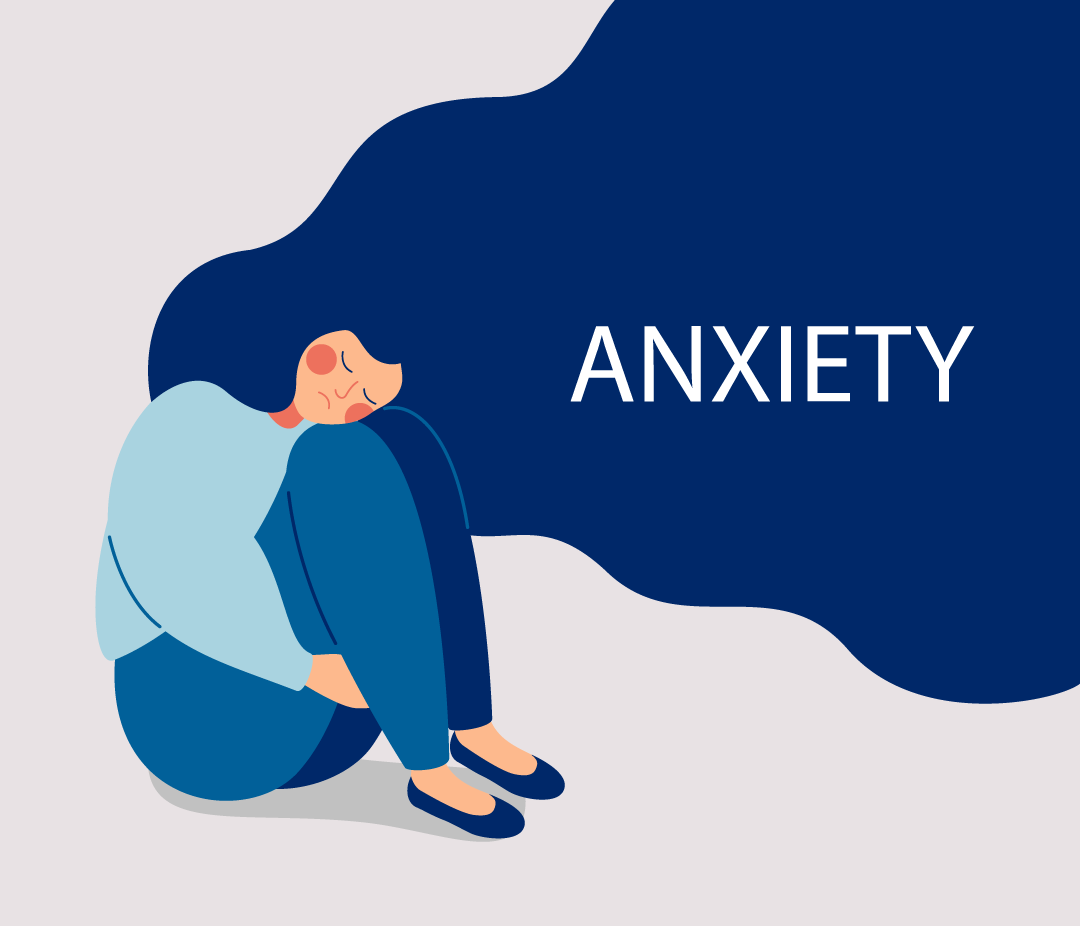Anxiety Grounding Mechanisms

an article by
Julia Di Giacomo, LCSW
When human beings are in danger their bodies produce a heightened state of arousal know as fight or flight response. This response is meant to warn us about the threat to our safety and therefore serves to be very useful in protecting us. However, for many people this type of reaction can become attached to perceived threats which are not real and therefore the response becomes maladaptive and creates a great deal of distress for the person experiencing it. At that point, the person may begin experiencing what we refer to as an anxiety disorder which can manifest anxiety symptoms in any general sense, in social situations, can lead to panic attacks or can be extreme as part of the post-traumatic stress disorder after a traumatic event.
Due to the unpredictable nature of the onset of these symptoms, anxiety disorders are one of the main reasons people seek mental health counseling and therapy. In my professional experience in working with these disorders, I have found that clients do best when they are offered tools and techniques to manage their anxiety. These techniques are called Grounding Techniques as they are meant to “ground” the person and help them return to a state of homeostasis. Since the anxiety symptoms have everything running at an accelerated speed and have persons affected worrying about the future or regretting the past it is essential for the individual to be able to “ground” themselves to the here and now in order to return to a state of calm and well-being.
One of the first tools the clinician can offer is to help the client identify something they can use as an “Anchor” to remind them to return to the present moment.
Anchors:
Clients can use a rubber band, hair tie or bracelet around their wrist and when they feel themselves becoming anxious, they can snap themselves back to the present moment.
Clients can download a picture of a favorite person, place or art on the home screen of their phone and stare at it when becoming anxious to return to the present moment.
Clients can use a favorite symbol or toy on a key chain and hold it and rub it when becoming anxious so that they can return to present moment.
Clients can use a favorite song on speed dial or sounds that create a sense of calm and peace and help them to return to present time.
After the clients have anchored themselves then the work on “grounding” them and calming down the anxiety can begin.
Grounding Techniques:
Physical techniques:
Breathing- it must be deep breathing where they breathe in from the diaphragm for 3 seconds, hold for 3 seconds, release for 3 seconds and make a ssshhh sound when releasing to ensure they have emptied it all out and not holding the anxiety in their bodies.
Client sits up in a chair with feet firmly on the ground and place palms of hands on legs and count until their body calms down.
Client uses cold compresses near pressure points and hold it there until their body starts to regulate and calm down.
Client shakes themselves free of the anxiety by shaking their arms and legs and making loud sounds to get all the anxiety out of their body.
Clients get physical literally-They go for a walk, run, exercise, or dance until they feel their body return to its natural state.
Clients use an essential oil or favorite body cream on their skin and breathe it in until they feel themselves calming down.
Observation and physical description:
Clients are asked to focus on anything in the environment and describe everything about it. Whether it be a painting, a book, a car, a sign on a train or bus or in your office, etc. I have literally used a fire extinguisher when I have not had anything else and asked a client to describe everything about it. The idea is to use it as a distraction and to focus their energy on it. By the time the client is done describing it they will have calmed down.
Cognitive Techniques:
Cognitive techniques are also to be used as distractions that clients can access through memory such as recalling all the details from a favorite place or vacation. Once they focus on describing all the details of that time or place they will be reminded of the pleasant feelings associated with it and they will calm down.
Clients can also recite a favorite poem or song with this type of technique and the intention is the same by distracting their energy and focusing on the details and positive feelings they will return to present moment and feel better.
Client can also pray, meditate or participate in a guided meditation. These can all be used as distraction that help them return to the here and now and their state of homeostasis.
Client can also draw or use art as the distraction to soothe themselves and calm their anxiety.
Auditory Techniques:
Clients can listen to music or any other sounds that help them calm down. It can be the ocean, nature, birds, the sound of a loved one’s voice. The goal is the same to calm the anxiety and return them to the present moment.
It is only after clients have grounded themselves, achieved a state of homeostasis and safety that they can begin to work on the underlying issues and conflicts.

